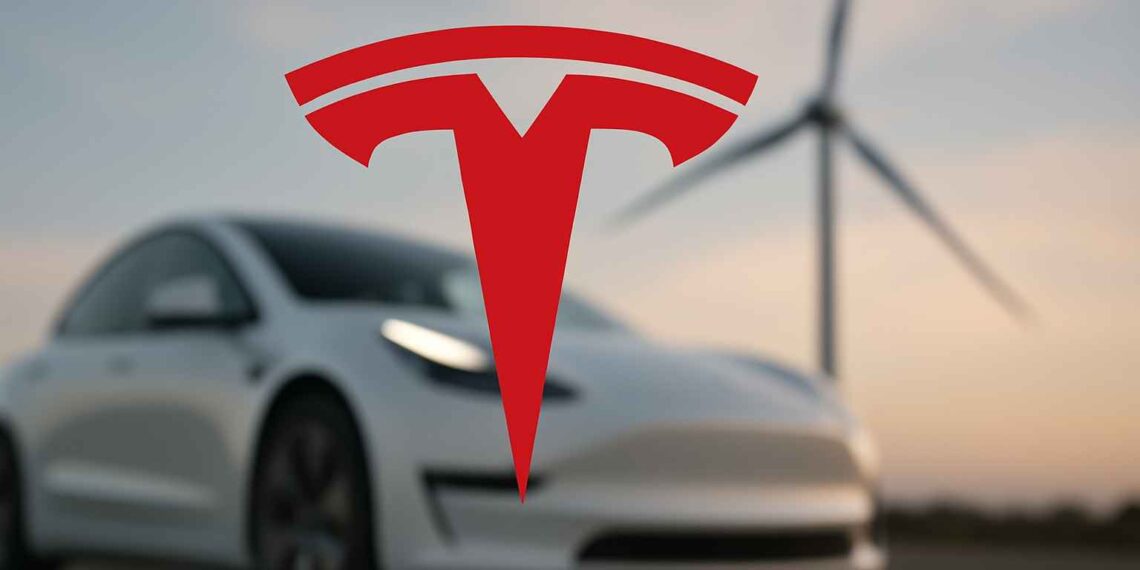Introduction: Tesla’s complex crossroads
The Tesla stock (NASDAQ: TSLA) is once again at the center of investor debate.
In early October 2025, the electric-vehicle pioneer reported record quarterly deliveries, yet the stock slid as investors questioned profit margins, political distractions, and the sustainability of recent demand surges.
With global competition heating up and Elon Musk’s leadership under scrutiny, Tesla faces one of its most defining chapters since its rise to global dominance.
Record deliveries — but mixed investor reaction
Tesla delivered 497,099 electric vehicles in Q3 2025, the highest quarterly figure in its history.
The surge came as many U.S. buyers rushed to purchase EVs before the expiration of key federal tax credits.
However, despite the record numbers, TSLA shares dropped about 5 percent following the report — a clear sign that markets remain focused on profit quality, not just volume.
Analysts warn that this “pull-forward” effect could lead to weaker demand in Q4, especially as EV competition intensifies across Europe and Asia.
Regional dynamics: strength in the U.S., weakness in Europe
While North American sales held strong, Tesla’s European market performance has deteriorated sharply, with a decline of more than 40 percent year-on-year in recent months.
The fall reflects mounting pressure from Volkswagen, BYD, and Stellantis — all aggressively discounting to protect market share.
Meanwhile, Tesla is expanding into new regions to diversify revenue.
The company began selling the Cybertruck in Qatar, marking its first official entry into the Gulf region, a growing market for high-end EVs.
Software and AI — the new frontier
Tesla’s biggest near-term catalysts lie not in its factories, but in its software ecosystem.
The upcoming Full Self-Driving v14 (FSD 14) update promises major leaps in autonomy, but it will only be available on vehicles with Hardware 4.0, limiting reach in the short term.
At the same time, Musk confirmed that Grok, the conversational AI developed by xAI, will soon be integrated into Tesla vehicles — effectively turning the car into an intelligent, voice-driven assistant.
If executed properly, these integrations could redefine Tesla’s identity — from an automaker to a consumer-tech and AI platform.
Financial performance: margin pressure continues
Tesla’s most recent quarterly earnings underline both its scale and its strain.
Revenue in Q2 2025 fell about 12 percent year-over-year to roughly USD 19.3 billion, while net income plunged 71 percent to just over USD 400 million.
Gross automotive margins narrowed to around 16 percent, down from 18 percent a year ago, as Tesla continued to cut prices to defend market share.
Energy storage remained a bright spot — margins there improved from 24 percent to 29 percent, supported by strong demand for Megapack installations and grid projects.
The stock market, however, remains focused on declining profitability per vehicle.
Tesla’s EPS of USD 0.40 in Q2 missed analyst expectations and reinforced concerns that the company’s price-cutting strategy is eroding returns.
Leadership and image turbulence
Tesla’s challenges extend beyond production and margins.
CEO Elon Musk’s political ventures — including his announcement of a new “America Party” — have sparked backlash, prompting fears that his public activism could distract from Tesla’s operational priorities.
Following his remarks, Tesla’s share price fell several percentage points in a single session.
Meanwhile, two board members — including Musk’s brother Kimbal Musk — collectively sold nearly USD 200 million worth of stock, and prominent analyst Gary Black revealed that his firm had fully exited its Tesla position.
These moves have raised questions about insider confidence and investor sentiment.
Strategic opportunities ahead
Despite the controversies, Tesla continues to innovate and expand:
- New markets: Middle East expansion and potential entry into India create fresh growth avenues.
- Energy division: Energy storage and charging infrastructure could become Tesla’s next major revenue pillar.
- Autonomy: FSD 14 and AI integrations could lay the foundation for future subscription income.
- Software margins: Tesla’s shift toward recurring digital revenue may help offset cyclical EV sales.
The company’s broad ecosystem — from vehicles to energy and AI — still provides unmatched optionality in the automotive industry.
Key risks and headwinds
⚠️ Demand volatility: The end of EV tax credits could sharply reduce U.S. orders in Q4.
⚠️ Europe slowdown: Weak regional sales highlight Tesla’s fading dominance in mature markets.
⚠️ Political distraction: Musk’s public ventures risk diluting focus on Tesla’s execution.
⚠️ Margin compression: Aggressive price cuts continue to squeeze profitability.
⚠️ Competition: BYD, Hyundai, and traditional automakers are closing the technology gap.
Investor outlook: innovation vs. execution risk
Tesla remains one of the world’s most innovative companies — but innovation alone isn’t enough to satisfy markets expecting consistent profitability.
The firm’s strategy of combining hardware dominance with software and AI ecosystems could pay off massively, but execution will be key.
For long-term investors, Tesla offers exposure to the entire future of electric mobility, AI integration, and energy technology.
For short-term traders, volatility is likely to remain high as sentiment swings between optimism and concern.
Analysts’ consensus currently rates the stock as a “Hold to Moderate Buy”, with target prices ranging from USD 240 to USD 290.
FAQ
Why did Tesla’s stock fall despite record deliveries?
Investors fear that the record Q3 numbers were front-loaded by expiring tax credits, and that margins remain under pressure.
What is FSD v14?
It’s Tesla’s next major self-driving software update, featuring advanced neural-network architecture and hardware-specific performance improvements.
Is Tesla still profitable?
Yes, but profits are down sharply due to lower vehicle prices and higher production costs.
What’s next for Tesla in 2026?
Expansion into India, further AI integration, and increased focus on energy storage and grid technologies.
Is Tesla stock a buy right now?
It depends on risk appetite — analysts view Tesla as a long-term growth play but caution against near-term volatility.
Disclaimer
This article is for informational purposes only and does not constitute financial advice.
Investing in equities — particularly in high-volatility growth companies like Tesla Inc. (TSLA) — involves significant risks, including potential loss of capital.
Always conduct your own research or consult a professional financial advisor before making investment decisions.







